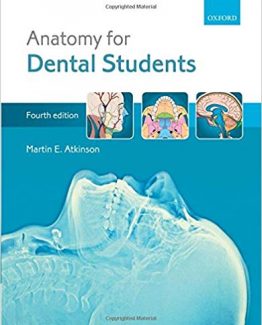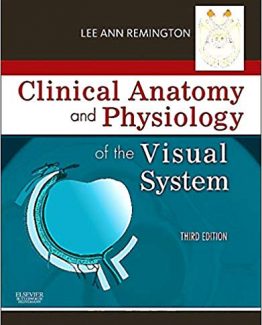Deaf Culture: Exploring Deaf Communities in the United States 2nd Edition by Irene W. Leigh, ISBN-13: 978-1635501735
[PDF eBook eTextbook]
- Publisher: Plural Publishing, Inc.; 2nd edition (November 18, 2020)
- Language: English
- 384 pages
- ISBN-10: 1635501733
- ISBN-13: 978-1635501735
A contemporary and vibrant Deaf culture is found within Deaf communities, including Deaf Persons of Color and those who are DeafDisabled and DeafBlind. Taking a more people-centered view, the second edition of Deaf Culture: Exploring Deaf Communities in the United States critically examines how Deaf culture fits into education, psychology, cultural studies, technology, and the arts. With the acknowledgment of signed languages all over the world as bona fide languages, the perception of Deaf people has evolved into the recognition and acceptance of a vibrant Deaf culture centered around the use of signed languages and the communities of Deaf peoples. Written by Deaf and hearing authors with extensive teaching experience and immersion in Deaf cultures and signed languages, Deaf Culture fills a niche as an introductory textbook that is more inclusive, accessible, and straightforward for those beginning their studies of the Deaf-World.
New to the Second Edition
o A new co-author, Topher González Ávila, MA
o Two new chapters!
o Chapter 7 Deaf Communities within the Deaf Community highlights the complex variations within this community
o Chapter 10 Deaf People and the Legal System: Education, Employment, and Criminal Justice underscores linguistic and access rights
o The remaining chapters have been significantly updated to reflect current trends and new information, such as:
o Advances in technology created by Deaf people that influence and enhance their lives within various national and international societies
o Greater emphasis on different perspectives within Deaf culture
o Information about legal issues and recent political action by Deaf people
o New information on how Deaf people are making breakthroughs in the entertainment industry
o Addition of new vignettes, examples, pictures, and perspectives to enhance content interest for readers and facilitate instructor teaching.
o Introduction of theories explained in a practical and reader-friendly manner to ensure understanding.
o An updated introduction to potential opportunities for professional and informal involvement in ASL/Deaf culture with children, youth, and adults
Key Features
o Strong focus on including different communities within Deaf cultures
o Thought-provoking questions, illustrative vignettes, and examples
o Theories introduced and explained in a practical and reader-friendly manner
o PluralPlus companion website with a test bank and digital slides/presentations for instructors
Table of Contents:
Cover
Title Page
Copyright
Contents
Preface
Acknowledgments
About the Authors
Part I. Deaf Culture: Yesterday and Today
1. Deaf Community: Past and Present
Introduction
The Deaf Community and Its Members
Deaf Children of Culturally Deaf Parents
Deaf Children of Hearing Parents
Hearing Members in Deaf Families
Hard-of-Hearing Individuals
Late-Deafened Individuals
DeafBlind Individuals
Multiple Communities
Demographics
Historical Highlights
Contemporary Descriptions
Deafhood
Deaf Gain
Deaf Ethnicity
People of the Eye
Deaf Epistemologies
Conclusions
References
2. Causes of Being Deaf and the Auditory Field
Determining One’s Hearing Level
Audiologists and Audiograms
Hearing Labels
What Causes Changes in Hearing Levels?
Genetic Causes
Acquired
Conductive
Sensorineural
History of Auditory Technology
Current Auditory Innovations and Rehabilitation
Hearing Level Screening
Hearing Aids
Cochlear Implants
The Cochlear Implant Controversy
Inspiration Porn
Genetic Engineering
Genetic Controversy
Conclusions
References
Part II. Signed Languages and Learning
3. American Sign Language
Background of ASL and Other Sign Languages
Indigenous Communities and “Hand-Talk”
African American Communities and BASL
European Communities
Euro-American Communities
Home Signs and Gestures
Village Sign Languages
How Sign Languages Are Spread
International Sign (IS) and Signed Languages Used Globally
ASL and English: Features, Content, and Structure
ASL Content
Structure
The Manual Alphabet
ASL Learners and Strategies
Dialects and Other Forms of Signed Communication
Attitudes: Linguistic Imperialism
Conclusions
References
4. How Deaf Children Think, Learn, and Read
Culture, Learning, and Intelligence
Culture and Language
IQ Tests
Thought and Language
Cognitive Abilities
Cognition Shaped by Culture
Incidental Learning
Joint Attention
Visual Attention and Peripheral Vision
Visual Imagery and Spatial Memory
Reasoning
Metacognitive Abilities
Theory of Mind
Executive Function
Language Pathways
Early Gestures, Family Communication, and Play
Language Milestones
The Brain, Multilingualism, and Sign Languages
Theories and Strategies
Literacy Learning
Importance
Developmental Pathways
Deficit Models
Asset Model
Conclusions
References
5. Deaf Education, Deaf Culture, and Multiculturalism
Deaf Culture and Multiculturalism
Factors Impacting Schooling
Age of Onset and Parental Hearing Status
Multilingualism, Multiculturalism, and Schooling
Lesbian, Gay, Bisexual, and Transgender (LGBT) Deaf Students
DeafDisabled Students
Communication and Language Approaches
History of Deaf Education
Bilingual and Multilingual Approaches
Blended Approaches
Monolingual Listening and Spoken Language (LSL) Approaches
Communication Approaches and DeafDisabled Students
School Settings
Center Schools
Private Oral Schools
Day Schools
Inclusion
Mainstream, Self-Contained Resource Room
Coenrollment
Charter Schools and Home Schools
Technology, DeafSpace, and Classroom Acoustics
Educational Programming
Early Childhood (EC) Levels (Birth to 5 Years)
Curriculum and Outcomes
Challenges in School
K to 12th-Grade Levels (5 to 22 Years)
Curriculum and Outcomes
Transition and Postsecondary Educational Opportunities
Curriculum and Outcomes
Postsecondary Challenges
Preparation of Teachers and Educational Interpreters
Teacher-Training
Educational Interpreter Training
Challenges for Teachers and Interpreters
Conclusions
References
Part III. Deaf Lives, Technology, Arts, and Career Opportunities
6. Deaf Identities
Deaf Identities
Categories of Deaf Identities
Disability Framework
Social Identity Theory
Racial Identity Development Framework
Deaf Identity Development Framework
Acculturation Model
The Narrative Approach
Intersectionality
Race/Ethnicity
Sexual Orientation
Disability
Conclusions
References
7. Deaf Communities Within the Deaf Community
References
8. Navigating Lives
Introduction
Forms of Discrimination
Resilience
The Role of Relationships in Strengthening Resilience
The World of Work
Health Issues
Mental Health Issues
Domestic Violence
Criminal Justice Issues
Aging Issues
Conclusions
References
9. Technology and Accessibility
History: Foundations for Access
Deaf Community and Access
Captions
Telephones
Alerting Devices or Systems
Wake-Up Devices
Baby Alerting Devices
Residential Security and Alarm Systems
Emergency Announcements
Assistive Systems and Devices
Innovative Technology
Conclusions
References
10. Deaf People and the Legal System: Education, Employment, and Criminal Justice
Education Laws
Laws in Early Childhood
Early Hearing Detection and Intervention (EDHI) Act
Individuals With Disabilities Education Act (IDEA) (Part C)
Laws With School-Age Deaf Children
IDEA (Part B)
IDEA (Part A)
American With Disabilities Act (ADA)
Section 504 of the Rehabilitation Act of 1973
Every Student Succeeds Act (ESSA)
Laws in Foster Care Placements
IDEA, ADA, and Section 504
Laws in Juvenile Justice Facility Placements
IDEA, ADA, and Section 504
Employment
Social Security Act
Rehabilitation Act of 1973
Americans With Disabilities Act (ADA)
Higher Education
ADA and 504 Protections
Justice System
Family, Education, and Language Factors
Section 504 and ADA Protections
The Bill of Rights and the 14th Amendment
Victims of Crimes
Prevalence and Types of Crimes
Homicide
Sexual Offending Crimes
The Criminal Justice Process
Barriers at the Arrest
Booking, Medical/Psychological Intake, and Orientation
Barriers at Trial
Barriers in Jail or Prison
Barriers in Probation and Parole
Conclusions
References
11. Arts, Literature, and Media
Arts
Visual and Tactile Arts
De’VIA
Performing Arts
Deaf Theater
Deaf in Television and Movies
Deaf in Game and Reality Shows
Deaf Music and Dancing
Literature
Literature in the Deaf Community
ASL Literature
Deaf Literature: English
Online ASL and Deaf Literature
Media
Deaf Images: Digital Arts and Photography
Deaf Motion: Cinema and Film
Conclusion
References
12. Advocating and Career Opportunities
Introduction
Deaf-Hearing Collaboration
Career Possibilities
ASL Interpreters
Teachers
Early Childhood Educators
Audiologists
Speech and Language Therapists
Vocational Rehabilitation Counselors and Job Coaches
Mental Health Service Providers
Hotline Volunteer
Clinical Mental Health Counselor
School Counselor
Social Work
Clinical Psychology
Emergency Medical Technicians
Other Career Possibilities
Conclusions
References
13. Final Thoughts on Deaf Culture and Its Future
References
Index
Back Cover
Irene W. Leigh, PhD, is a Deaf psychologist whose experience includes high school teaching, psychological assessment, psychotherapy, and private practice. From 1985 to 1991 she was a psychologist and assistant director at the Lexington Center for Mental Health Services. She taught in the Gallaudet University Clinical Psychology Doctoral Program from 1992 to 2012, was Psychology Department Chair from 2008 to 2012, and attained professor emerita status in 2012. Dr. Leigh serves on review boards of professional journals and was associate editor of the Journal of Deaf Studies and Deaf Education from 2005 to 2011. As a Fellow of the American Psychological Association, she served on two task forces and the Board for the Advancement of Psychology in the Public Interest.
Jean F. Andrews, PhD, received a bachelor’s degree in English language and literature from Catholic University, in Washington, DC, a master’s in education in Deaf education from McDaniel College (formerly Western Maryland College) in Westminster, Maryland, and a doctorate in speech and hearing sciences from the University of Illinois, Champaign-Urbana, Illinois. Dr. Andrews was a classroom teacher of reading at the Maryland School for the Deaf in Frederick, Maryland. From 1983 to 1988, she prepared educational interpreters and teachers of Deaf students at Eastern Kentucky University, Richmond, Kentucky. From 1988 to 2015, she taught classes, prepared teachers and doctoral level leaders, and conducted applied research at Lamar University in Beaumont, Texas. Dr. Andrews’ research interests include language and literacy, Deaf Studies, ASL/English bilingualism, and forensic issues with deaf offenders. She has also served on the governing board of the Texas School for the Deaf. Currently, she is working on ASL/English science materials for struggling Deaf readers.
Raychelle L. Harris, PhD, a third generation Deaf and a native ASL signer, received her bachelor’s degree in American Sign Language (ASL) from Gallaudet University in 1995 and master’s degree in Deaf education from Western Maryland College in 2000. Dr. Harris has been teaching ASL as a first and second language since 1993. She returned to Gallaudet University for her doctoral studies in the areas of education and linguistics, with her dissertation topic focused on ASL discourse in academic settings. In 2008, Dr. Harris joined Gallaudet University’s Department of Interpretation as a faculty member. Since 2009, she has been teaching with the Department of ASL and Deaf Studies, preparing future ASL teachers in the masters in sign language education program. She is also one of three editors of the Journal of ASL and Literature. Dr. Harris holds professional certification with the American Sign Language Teachers Association and is a Certified Deaf Interpreter.
Topher González Ávila, MA was raised in a multilingual family of Lengua de Señas Mexicana (LSM), American Sign Language (ASL), English and Spanish. Topher graduated from University of North Texas with Bachelor’s degrees in Criminal Justice and Radio, Television & Film (RTVF) in 2015. He continued his education at Gallaudet University and graduated in 2018 with a Master’s in Sign Language Education. Topher is a Certified Deaf Interpreter with the Board for Evaluation of Interpreters (BEI) since 2016. He is the first Deaf Latinx interpreter in the state of Texas to hold a BEI Court Interpretation certification. Topher teaches for Gallaudet University’s Master’s in Sign Language Education program. Topher works as a community interpreter and a freelance video editor.
What makes us different?
• Instant Download
• Always Competitive Pricing
• 100% Privacy
• FREE Sample Available
• 24-7 LIVE Customer Support





